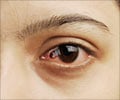New study summarizes the methods used to assess age-related macular degeneration (AMD) and its impact on function and quality of life.

‘Age-related macular degeneration (AMD) is associated with a progressive loss of photoreceptor cells at the point of sharpest vision. People older than 60 years are most affected, corresponding to around 2.5 million people in the European Union. ’





The number of persons affected by AMD is expected to rise due to increasing life expectancy. Disease progress from an early stage to an intermediate stage is typically associated with low-light and low-contrast vision problems. Late stage AMD usually leads to irreversible central vision loss. Currently, clinical tests available are good at diagnosing the loss of vision in late stage AMD. However, they are not sensitive to changes in vision in earlier stages of the disease, thus, hampering the testing of treatment methods to prevent or delay progression of early AMD stages. Therefore, MACUSTAR is developing novel tests to assess earlier stages of AMD.
20 Study Centers Examine 750 Patients in Europe
The core of the MACUSTAR project is a three-year observational study of 750 patients who have intermediate and other stages of AMD. They will be recruited by 20 participating clinical trial centers in seven European countries. Aim of the investigation is to find variables that provide reliable information on disease progression or stability, which could then be further developed into clinical tests.
The article published in the peer-reviewed journal Ophthalmologica summarizes the methods used to assess AMD and its impact on function and quality of life. For example, high-resolution imaging techniques will provide information on anatomical changes in the retina. Besides conventional visual function tests, vision under low-light conditions and contrast vision will be determined. Researchers will also capture the light sensitivity of the macula, the duration of dark adaptation, and reading speed and visual path navigation under low-light conditions. In addition, questionnaires will provide information on how visual impairment is perceived by the study participants. The MACUSTAR consortium aims to identify the best method or combination of methods that indicate if a novel therapeutic approach can stop AMD progression in the future.
Advertisement
Besides the University of Bonn and GRADE Reading Center Bonn, Moorfields Eye Hospital London (MBRC), University College London (UCL), City University of London (City), Fondation Voir et Entendre (FVE) Paris, Association for Innovation and Biomedical Research on Light and Image (AIBILI) Coimbra, Radbound University Medical Center (RUMC) Nijmegen, University of Sheffield and the European Clinical Research Infrastructures Network (ECRIN) Paris as well as the companies Bayer AG, Novartis Pharma AG, Carl Zeiss-Meditec and F. Hoffmann La-Roche are involved.
Advertisement
Source-Eurekalert









